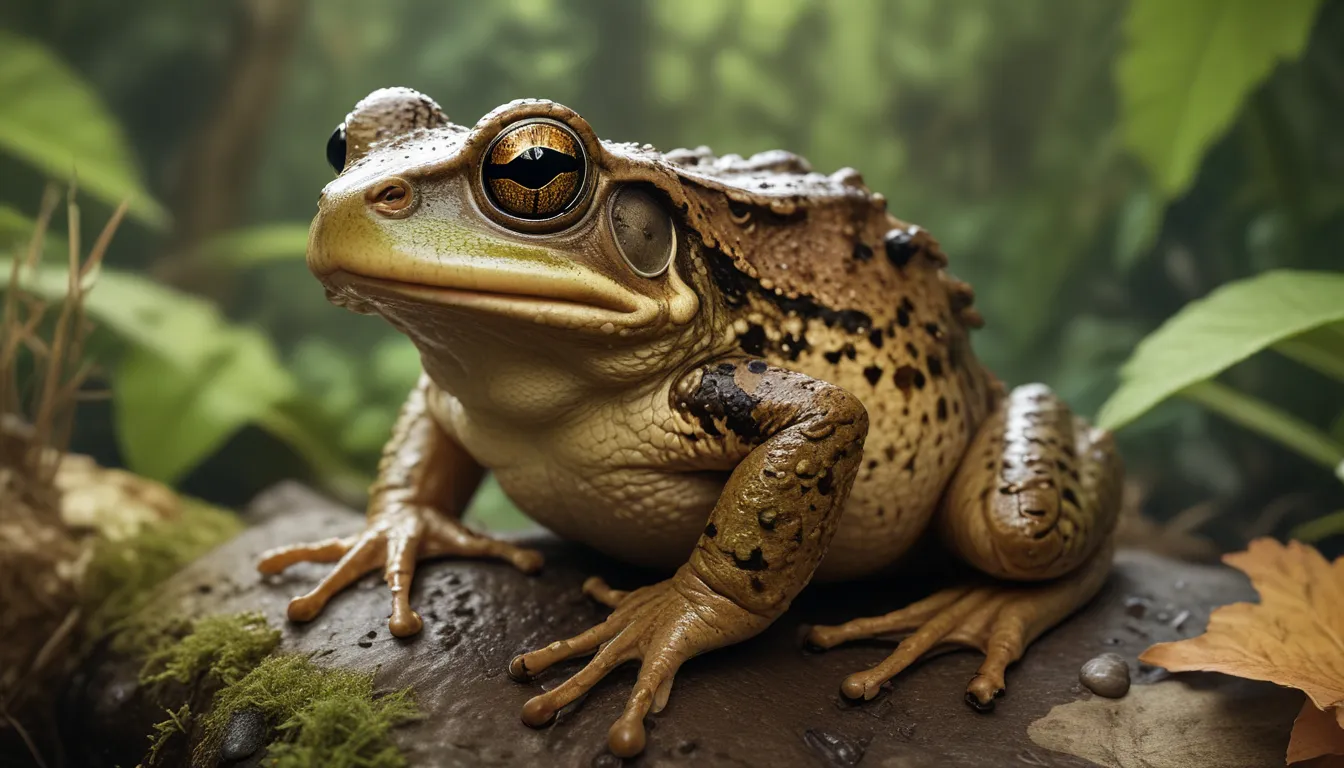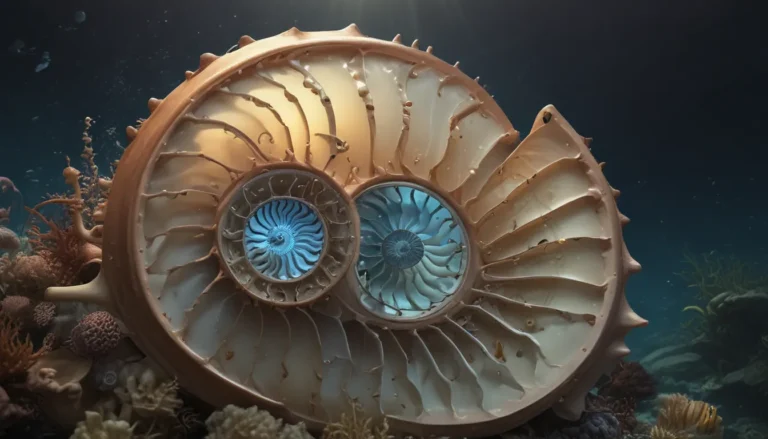The pictures we use in our articles might not show exactly what the words say. We choose these pictures to make you interested in reading more. The pictures work together with the words but don’t take their place. The words still tell you the important facts.
Have you ever mistaken a frog for a toad, or vice versa? These small creatures can sometimes be confusing to differentiate. But fear not, as we delve into the world of frogs and toads, exploring their unique traits and characteristics. From their origins to physical appearance, behavior, cultural values, and even folklore, there is much to discover about these fascinating amphibians.
Toad vs Frog: Origins in the Anura Kingdom
Both frogs and toads belong to the Anura Kingdom, a group of tailless animals that thrive in various environments. Toads, specifically, fall under the family Bufonidae, while true frogs can be found in the family Ranidae. Understanding their shared history and classification can provide insight into their evolutionary paths and habitats.
Toads refer to the Anura family known as Bufonidae.
Toads are a subset of the Anura Kingdom, specifically belonging to the Bufonidae family. While all toads are technically frogs, not all frogs are classified as toads. This distinction highlights the diversity within the amphibian world and the intricate relationships between species.
True frogs also exist in the family called Ranidae.
On the other hand, true frogs are part of the Ranidae family, encompassing a wide range of species with distinct characteristics. From typical-looking frogs to specialized adaptations, the diversity within the Ranidae family showcases the versatility of these amphibious creatures.
Toad vs Frog: Physical Appearance
When encountering a frog or a toad, their physical attributes can provide valuable clues to identify their species. From their legs and eyes to their skin texture and size, each aspect contributes to their unique appearance and behavior in their respective habitats.
Frog legs are longer than toad legs.
A simple observation of leg length can help differentiate between frogs and toads. Frogs typically have longer legs, suited for hopping and leaping, while toads have shorter hind legs that make them slower in movement. This distinction in leg morphology reflects their preferred modes of locomotion in their natural environments.
Frog eyes are more protruding, while toad eyes are smaller.
The eyes of frogs and toads also offer insight into their behavior and habitat preferences. Frogs, with their bulging eyes, have a wider field of vision, aiding them in detecting predators and prey. In contrast, toads possess smaller eyes, adapted to their specific ecological niches.
Frog skin is smoother compared to toad skin.
The texture of their skin serves as another distinguishing feature between frogs and toads. While frog skin appears smooth and moist, toad skin can be lumpy, sometimes resembling warts. This difference in skin texture is a reflection of their respective lifestyles and environmental adaptations.
The biggest frog in the world is larger than the biggest toad in the world.
Size can also be a factor in differentiating between frogs and toads. The Goliath frog, known for its colossal dimensions, surpasses the size of the Cane Toad. These size variations highlight the diverse range of shapes and sizes found within the amphibian world.
Some frogs, like the Gliding Leaf Frog, can even jump from tree to tree.
The agility and mobility of certain frog species, such as the Gliding Leaf Frog, showcase their unique adaptations to arboreal habitats. Their ability to glide through the canopy reflects their specialized locomotion strategies in diverse ecosystems.
Toad vs Frog: Behavior
Beyond their physical appearance, the behavior of frogs and toads can offer further insights into their ecological roles and evolutionary adaptations. From egg organization to habitat preferences and lifespan, their behaviors reflect their unique survival strategies in varying environments.
Frog and toad eggs are organized differently.
The arrangement of eggs can vary between frog and toad species, providing clues to their reproductive habits and parental care behaviors. Frogs may lay eggs in clusters, while toads often prefer a linear arrangement. Understanding these egg-laying patterns can shed light on their breeding strategies.
Toads prefer grasslands.
While frogs gravitate towards bodies of water, toads exhibit a preference for grasslands and open spaces. This distinction in habitat selection reflects their physiological adaptations to drier environments, where moisture retention is crucial for their survival. By inhabiting grasslands, toads demonstrate their ability to thrive in diverse landscapes.
Some toads tend to live longer than frogs.
The lifespan of frogs and toads can vary, with some toad species exhibiting longevity compared to certain frog species. By studying the average lifespans of these amphibians, researchers can gain valuable insights into their life history traits and ecological requirements.
Frogs move faster than toads due to their body differences.
The anatomical differences between frogs and toads contribute to variations in their locomotor abilities. Frogs, with their elongated legs and streamlined bodies, are adept at quick movements and agile leaps. In contrast, toads, with their shorter legs and robust build, exhibit a more sedentary and patient approach to hunting.
Toad vs Frog: Cultural Values
Throughout history, frogs and toads have held symbolic significance in various cultures, folklore, and mythologies. From rain-bringing toads to transformational frogs, these amphibians have captured the imagination of storytellers and artists worldwide.
Toads bring forth rain and frogs bring down change.
In different cultures, toads are often associated with rain and water, symbolizing abundance and fertility. Frogs, on the other hand, represent transformation and change, prompting individuals to embrace growth and adaptation. These cultural associations highlight the symbolic richness of amphibians in human societies.
The Black Toad is a book written regarding witchcraft.
Toads, with their mysterious allure and ancient symbolism, have been linked to practices of witchcraft and magic. The Black Toad, a book exploring traditional English witchcraft, delves into the symbolism and significance of these amphibians in occult traditions. Through literature and folklore, toads continue to intrigue and inspire tales of mysticism and enchantment.
Ancient Egyptians believed in Heqet, while the Chinese believed in Yin.
In ancient civilizations, frogs and toads held religious and spiritual significance, embodying deities and natural forces. The goddess Heqet, associated with fertility in Ancient Egypt, was often depicted with frog imagery, symbolizing the renewal of life. Similarly, in Chinese culture, toads were revered as symbols of Yin, embodying feminine energies and rain-bringing powers. These cross-cultural connections underscore the universal appeal of frogs and toads in diverse belief systems.
Toad vs Frog: Folktales
Beneath the surface of folklore and mythology lies a trove of stories and legends featuring frogs and toads. From debunking common myths to exploring their unique abilities, these tales weave a rich tapestry of cultural narratives.
Toads don’t actually give you warts.
Despite popular misconceptions, toads do not possess the mystical ability to grant warts to humans. The wart-like bumps on a toad's skin are harmless and serve as a natural defense mechanism rather than a source of contagious affliction. By dispelling this age-old myth, we can appreciate these creatures for their true beauty and ecological significance.
Some frogs can actually survive after you freeze them.
Certain frog species exhibit remarkable adaptations to survive harsh environmental conditions, such as freezing temperatures. Through physiological mechanisms like high glucose levels, these frogs can withstand freezing and thawing without permanent damage. The resilience of these amphibians underscores the incredible diversity and survival strategies found in nature.
Both toads and frogs can induce hallucinations.
While frogs and toads possess fascinating biological traits, some species produce toxins that can have hallucinogenic effects on humans. These neurotoxins, when ingested or in contact with the skin, can cause hallucinations and affect the nervous system. By understanding the potential risks associated with certain amphibians, we can appreciate the complexity and diversity of their chemical defenses.
Toad vs Frog: Delicacies
In culinary traditions around the world, frogs and toads have been prized as delicacies, offering unique flavors and nutritional benefits. From gourmet frog legs to creative toad recipes, these amphibians have found their way into the realm of gastronomy.
Cane Toad legs are also now a delicacy.
Despite their toxic reputation, Cane Toads have become a culinary curiosity in certain regions, with chefs exploring innovative ways to prepare their legs safely. By following careful preparation techniques and utilizing specific culinary methods, Cane Toad legs can be transformed into a gourmet dish, offering a blend of flavors and textures.
Frog legs are a delicacy and healthy to eat.
Frog legs, a staple in French cuisine and various international dishes, are not only a delicacy but also a source of essential nutrients. Rich in omega-3 fatty acids, potassium, protein, and vitamins, frog legs provide a healthy and flavorful option for culinary enthusiasts. The versatility of frog legs in cooking reflects the cultural diversity and culinary innovations surrounding amphibious delicacies.
Conclusion
As we navigate the world of frogs and toads, we uncover a wealth of information, folklore, and cultural significance surrounding these captivating creatures. From their evolutionary origins to behavioral traits, symbolic values, and culinary appeal, frogs and toads continue to fascinate and intrigue us with their diversity and resilience. Whether you're a frog enthusiast or a toad admirer, there's no denying the enduring allure of these amphibious wonders. Cheers to the future discoveries and shared appreciation for the enchanting world of frogs and toads.
Our commitment to delivering trustworthy and engaging content is at the heart of what we do. Each fact on our site is contributed by real users like you, bringing a wealth of diverse insights and information. To ensure the highest standards of accuracy and reliability, our dedicated editors meticulously review each submission. This process guarantees that the facts we share are not only fascinating but also credible. Trust in our commitment to quality and authenticity as you explore and learn with us.






